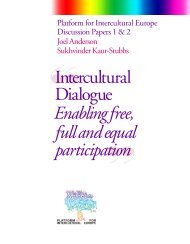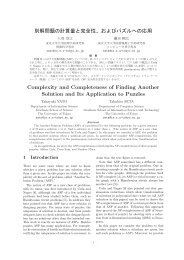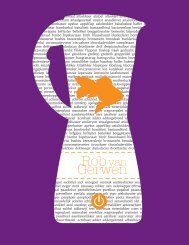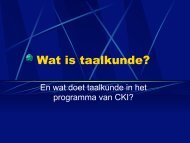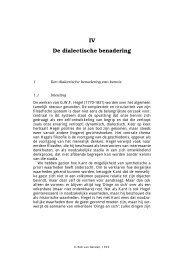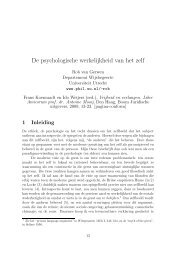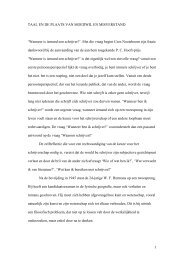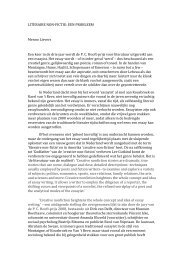Slides - Universiteit Utrecht
Slides - Universiteit Utrecht
Slides - Universiteit Utrecht
You also want an ePaper? Increase the reach of your titles
YUMPU automatically turns print PDFs into web optimized ePapers that Google loves.
Dus natuurlijke taal is context-vrij?<br />
• Engelse syntaxis is niet regulier<br />
• Is een context-vrije grammatica genoeg?<br />
• Schwyzerdütsch (Zwitserland/Italië)<br />
• (1) mer d’chind em Hans es huus haend wele laa hälfe<br />
we de-kinderen de Hans het huis hebben willen laten helpen<br />
aastriiche<br />
schilderen<br />
• [de kinderen].ACC [Hans].DAT [es huus].ACC haen wele [laa] ACC<br />
[hälfe] DAT [aastriiche] ACC<br />
• X (NP-dat) m (NP-acc) n (V dat ) m (Vacc) n Y<br />
• Deze kruisende afhankelijkheden zijn typisch voor<br />
context-gevoelige talen:<br />
voorbeeld: a n b m c n d m is context-gevoelig en niet<br />
context-vrij<br />
Anna Chernilovskaya (<strong>Universiteit</strong> <strong>Utrecht</strong>) Complexiteit Inleiding Taalkunde 32 / 47



